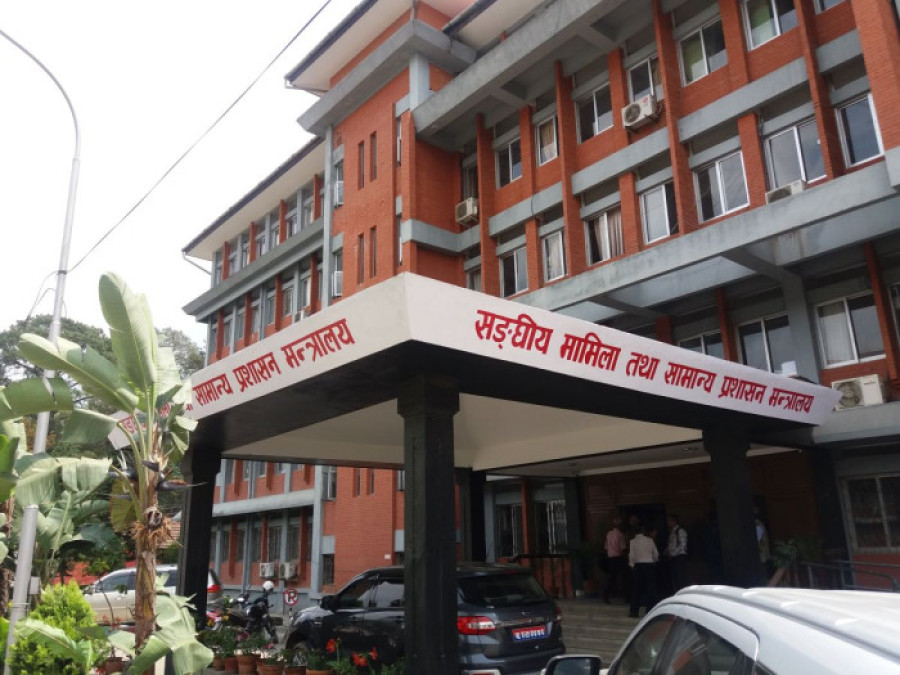Columns
Coordination for effective federalism
A centralised mindset has hindered the effective implementation of the IGR law.
Khim Lal Devkota
The Constitution of Nepal, as outlined in Article 232, mandates that “relationships between the federation, provinces and local levels be grounded in the principles of cooperation, co-existence and coordination”. Article 235 of the Constitution grants the federal parliament the authority to draft the necessary coordination law to maintain coordination among the federal units. In line with this directive, the “Federation, Province, and Local Level (Coordination and Interrelation) Act, 2020 (2077),” commonly known as the Intergovernmental Relations (IGR) Law, was enacted.
The primary purpose of the IGR law is to strengthen the federal system by fostering coordination and cooperation in areas such as law and policy formulation. As Nepal transitioned from a centralised system to a federal structure, laws were critical to facilitate this transition and address people’s aspirations following the new constitution. To bridge this gap and ensure that the newly established three tiers of government function in accordance with the spirit of the constitution, the federal government introduced the IGR law. The law has become one of the most widely discussed pieces of legislation.
However, Nepal embraced federalism without fully developing the necessary infrastructure and groundwork for its effective implementation. This decision has led to ongoing challenges, as political parties and their leaders have differing interpretations of federalism from the outset. These differences became apparent soon after the first government was elected in 2017, accompanying the federalism. Despite the constitutional provisions agreed upon by all political parties, implementation has been walking at a snail’s pace, with some provisions still unfulfilled.
This has raised concerns, particularly as provincial governments have been demanding their rights from the federal government. Local governments, which had already established their bases and were revived nearly after two decades of dormancy with extensive rights, are now neglected.
IGR law
The implementation of the IGR law has begun, with major provisions gradually coming into effect. However, the process has been hindered by a centralised mindset, sluggish bureaucracy and political meddling.
While all federal units have widely accepted the IGR law, the primary concern lies in its effective implementation and the devolution of power. The law’s main objective is to facilitate the implementation of constitutional provisions related to power sharing among the three tiers of government. A detailed analysis reveals that many of the law’s key provisions have only been partially implemented, highlighting the urgent need for a robust mechanism to ensure that all structures envisioned by the law are fully functional.
Leaders holding executive positions at the federal level have been reluctant to devolve exclusive powers to the sub-federal levels. This reluctance, driven by a desire to retain power at the federal level, has significantly impeded the proper implementation of constitutional provisions and laws intended to strengthen inter-governmental relations. Additionally, the stakeholders’ lack of ownership has further obstructed the process. For the proper application of the law, all stakeholders must clearly understand its importance.
Government officials have often failed to grasp the spirit of the explanatory notes, which outline the principles of coordination, cooperation and co-existence that underpin the IGR. Despite having the necessary legal framework, state organs have not ensured its proper execution. However, the provinces and local levels have shown resilience, refusing to relent, which is a positive aspect.
Slow implementation
Several factors have contributed to the slow implementation of the IGR law. Unstable governments have delayed meetings of Sectoral Thematic Committees, the National Coordination Council (NCC) and the Provincial Coordination Council (PCC), affecting their ability to resolve issues. Frequent changes in government have also disrupted the settings of IGR mechanisms. Additionally, the study of the law has been delayed due to a lack of resources, with employees in the law ministry often juggling dual responsibilities that hinder their work.
Local governments are often unaware of many IGR law provisions and lack the resources, technical manpower and skills to implement them fully. The use of non-declarative phrases and sentences, such as “matters to be considered” or “if found necessary,” has weakened the law’s effectiveness.
One striking example of such a lack of coordination is the delay of the Kathmandu-Terai fast-track project. It highlights the significant lack of coordination between the three government tiers despite the existence of the IGR law.
Addressing coordination issues
A permanent structure at the Office of the Prime Minister and Council of Ministers (OPMCM) is needed to function as the secretariat of the National Coordination Council. This structure should have a strong presence of representatives from sub-federal levels. Currently, the Provincial Coordination Section of the OPMCM handles issues related to the provinces, while the Ministry of Federal Affairs and General Administration manages local-level issues. A single mechanism should be developed to address issues concerning both federal units.
Similarly, a mechanism for coordination and consultation at provincial and local levels should be established. Section 4 of the IGR law does not specify which federal body will coordinate with provinces and local levels while formulating laws and policies on exclusive and concurrent power matters. A coordination and consultation mechanism should be developed at the federal level, as the legislature has the sole authority to make laws, and the government prepares the first draft of bills.
The Intergovernmental Fiscal Council was established under the Intergovernmental Fiscal Arrangement Act of 2017 to resolve fiscal issues between federal units. Since the council is more inclusive, functional and effective, the representation model used in the Sectoral Thematic Committees should be similar to that outlined in the Fiscal Council law. Having at least one local representative from each province could help raise and resolve their issues.
The Provincial Coordination Council should be made more inclusive, with increased representation from local levels. This would ensure that the new mechanism represents all local levels. Compared to the initial one, the existing provision is regressive. A series of information-sharing programmes should also be conducted among federal units to educate them on the IGR law and federalism. The Federalism Implementation Special Committee of the National Assembly has urged the government to launch a broad awareness campaign from the grassroots to the federal level. Targeted training and orientation sessions at all local levels are essential to inform stakeholders about the law’s provisions and implications.
Other things include resource management, skilled human resources and logistics management. These would prove beneficial in addressing the coordination issues in our federal structure.




 18.12°C Kathmandu
18.12°C Kathmandu















